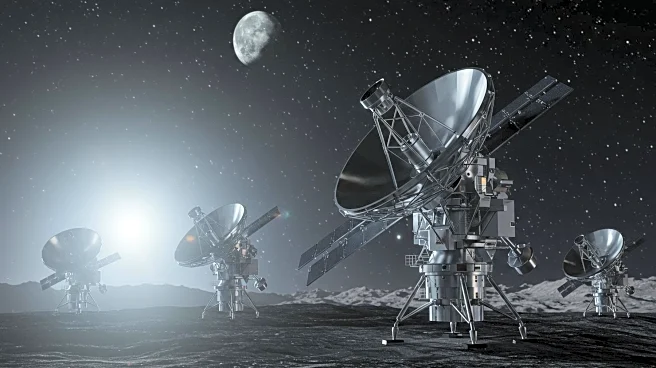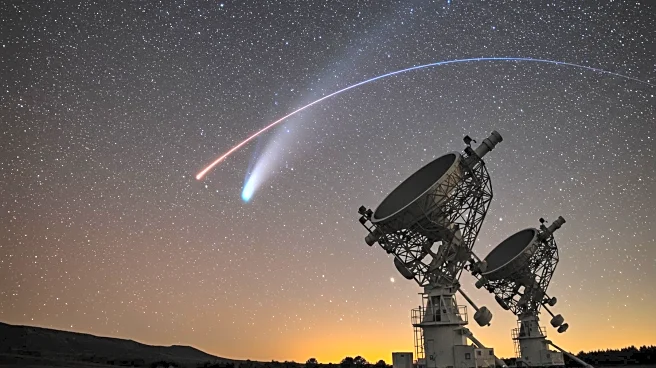What's Happening?
NASA is exploring the possibility of constructing an optical interferometer on the Moon as part of its Artemis program. This initiative aims to obtain resolved images of interstellar objects, such as the newly discovered 3I/ATLAS, which cannot be resolved with current Earth-based telescopes. The proposed lunar interferometer would avoid atmospheric turbulence, offering higher angular resolution and flux sensitivity. The Rubin Observatory in Chile is expected to discover new interstellar objects frequently, making a lunar interferometer crucial for identifying their nature.
Why It's Important?
The ability to resolve interstellar objects is significant for understanding their nature, whether they are natural rocks or technological spacecraft. High-resolution imaging could provide insights into potential alien technology, influencing planetary defense strategies. The development of a lunar interferometer could enhance scientific capabilities and foster international collaboration in space exploration. It represents a step forward in utilizing lunar infrastructure for advanced astronomical research, potentially leading to breakthroughs in understanding interstellar phenomena.
What's Next?
Future encounters with interstellar objects may involve deploying an array of spacecraft equipped with cameras to intercept and analyze these objects. This ambitious project could be funded as part of a Planetary Defense Program, especially if humanity encounters alien technology. The upcoming close approaches of 3I/ATLAS to Jupiter and Mars present opportunities for observation using existing spacecraft cameras, such as Juno and HiRISE, which could provide valuable data on the object's characteristics.
Beyond the Headlines
The initiative to resolve interstellar objects highlights the intersection of astronomy and planetary defense. It raises ethical questions about the exploration and potential exploitation of extraterrestrial resources. The project could also influence public perception of space exploration, sparking interest in the search for extraterrestrial life and the technological advancements required to achieve it.











